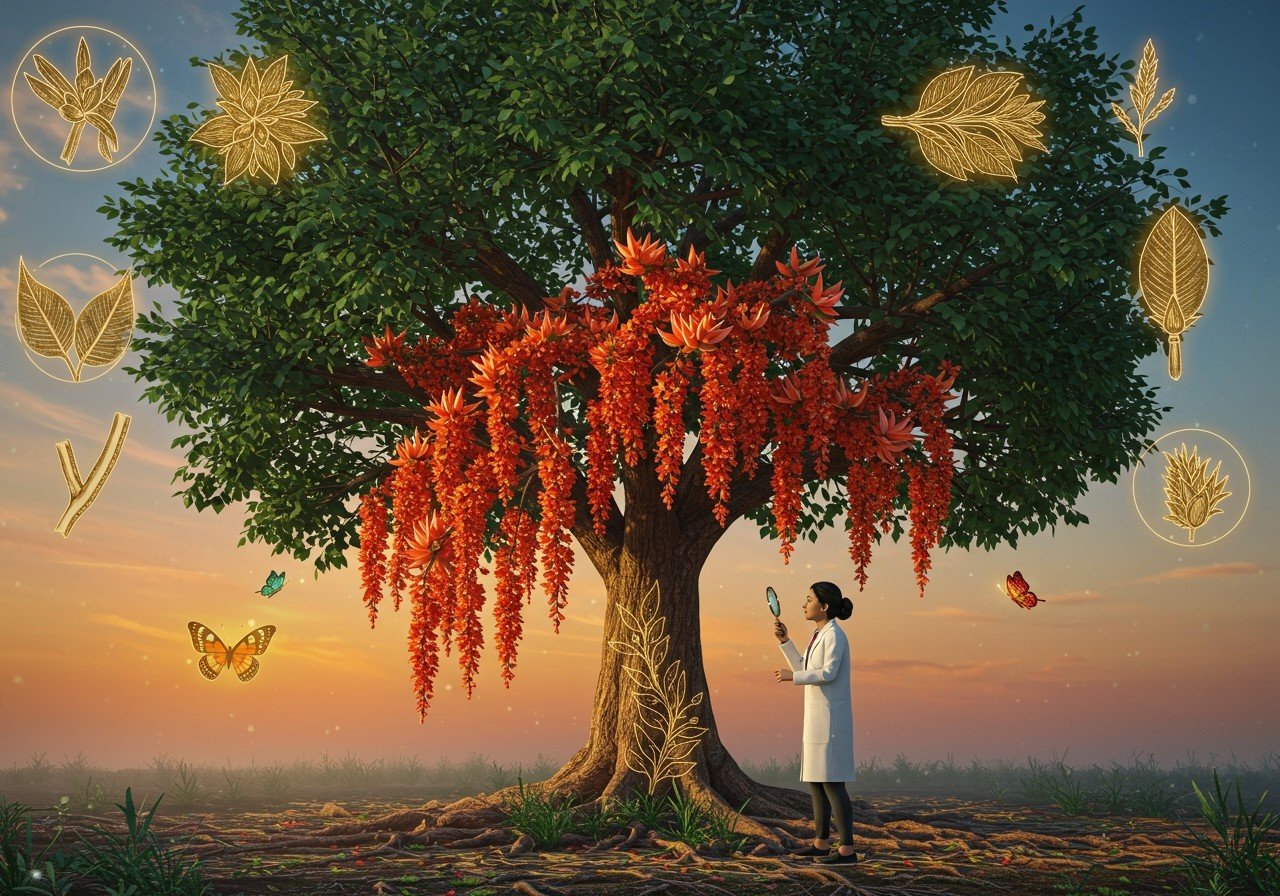
The Ashoka tree, scientifically known as Saraca asoca, holds a special place in the hearts of Indians. It’s not just a tree; it’s a symbol of love, fertility, and a vibrant part of our cultural heritage. From ancient myths to modern-day rituals, the Ashoka tree continues to enchant us with its beauty and significance.
Understanding the Ashoka Tree: A Botanical Perspective
Let’s delve a little deeper into what makes the Ashoka tree so unique. Its botanical name, Saraca asoca, is a reflection of its esteemed position in the plant kingdom. Belonging to the Fabaceae family (also known as the legume family), it shares characteristics with other plants that nourish the soil by fixing nitrogen – a true gift to the environment.
Identifying the Real Ashoka Tree: Key Features
With so many trees around, how can you spot a true Ashoka tree? It’s easier than you think! Here’s a handy guide:
- General Appearance: Imagine a medium-sized evergreen tree, standing tall and proud, with a dense, rounded canopy. It typically reaches a height of 10-12 meters, although some can grow even taller, up to 30 meters. The trunk is straight, adding to its regal appearance. The Ashoka tree retains its vibrant green leaves all year round.
- Leaves: Look closely at the leaves. They are compound, meaning multiple leaflets are attached to a single stem. These glossy, dark green leaflets are oblong or lance-shaped, with pointed tips. Young leaves emerge in a beautiful coppery-red hue, eventually deepening into the rich green of maturity.
- Flowers: The flowers are the true showstoppers! Fragrant and vibrant, they appear in beautiful clusters. Their colours range from a cheerful orange-yellow to a deep, passionate red. Interestingly, the flowers often bloom directly from the trunk, adding to the tree’s unique charm. These blooms typically grace us with their presence from February to April.
- Bark: The bark of the Ashoka tree is dark, ranging from brown and grey to almost black. It has a rough, warty texture. A freshly cut piece of bark reveals a pale yellowish-red inside, which gradually turns reddish when exposed to air.
- Fruits and Habitat: The Ashoka tree bears fruit in the form of flat, oblong pods, each containing multiple seeds. Native to the Indian subcontinent, it thrives in tropical and subtropical climates.
A Word of Caution: Sometimes, the Polyalthia longifolia (False Ashoka) is mistaken for the true Ashoka. The False Ashoka is taller and more slender, with simple leaves and apple-green flowers. The true Ashoka, however, has those distinct compound leaves and stunning orange-red flowers.
The Ashoka Tree in Our Culture and Traditions
The Ashoka tree isn’t just beautiful; it’s deeply woven into the fabric of our culture. It finds mention in ancient texts, mythological stories, and traditional rituals. Its association with love and fertility makes it a significant symbol in various ceremonies. In Ayurveda, the traditional Indian system of medicine, the Ashoka tree is known for its medicinal properties. Its bark, leaves, and flowers are used in preparing remedies for various ailments.
Protecting the Ashoka Tree: A Shared Responsibility
Sadly, habitat loss poses a threat to the Ashoka tree population. We must recognize its importance, not just for its cultural significance but also for its role in maintaining ecological balance. Conservation efforts are crucial to ensure that future generations can continue to marvel at its beauty and benefit from its presence.
Bring the Purity of Ashoka into Your Home with Poojn.in
At Poojn.in, we understand the significance of the Ashoka tree in your life. That’s why we offer 100% pure Ashoka Chal (bark) sourced with utmost care and available in convenient packs of 100g, 250g, and 1kg. We also offer Ashoka powder and other related puja items to enhance your spiritual practices. Our products are laboratory tested for purity, ensuring you receive only the best. Visit our website www.poojn.in or connect with us via call or WhatsApp to learn more.
Let the Ashoka tree, a symbol of enduring love and life, inspire you. And let Poojn.in be your trusted partner in connecting with India’s rich cultural and spiritual heritage.
Explore more about sacred plants and rituals on our blog: Sacred Hindu Plants: Symbolism and Puja Rituals.


